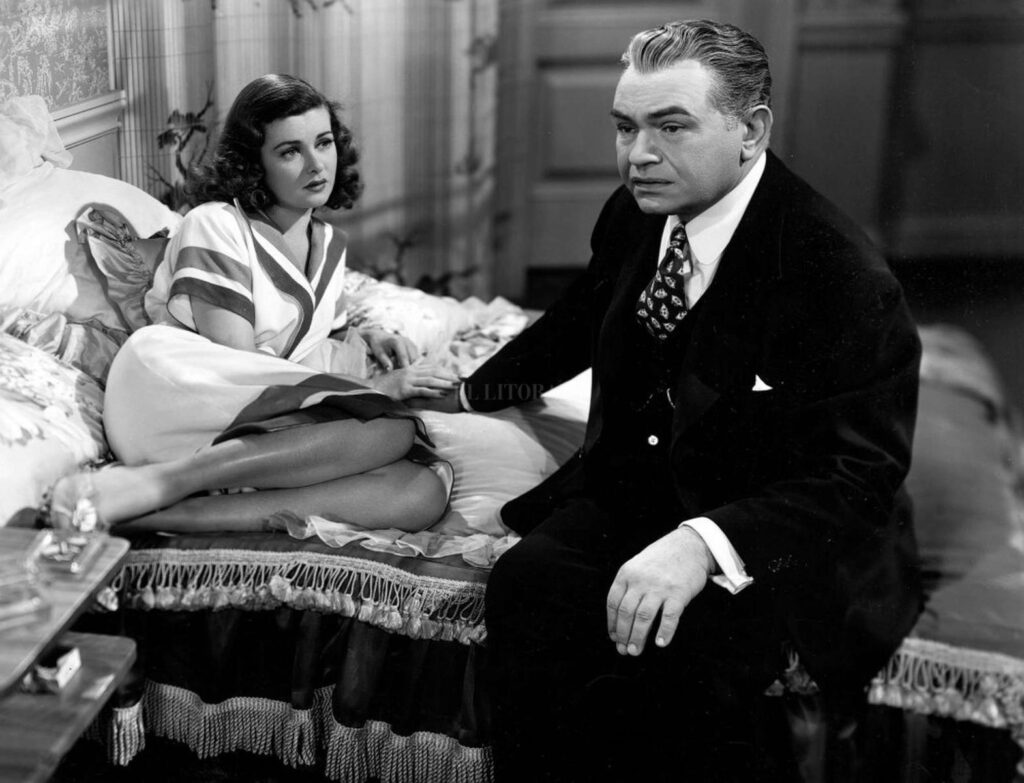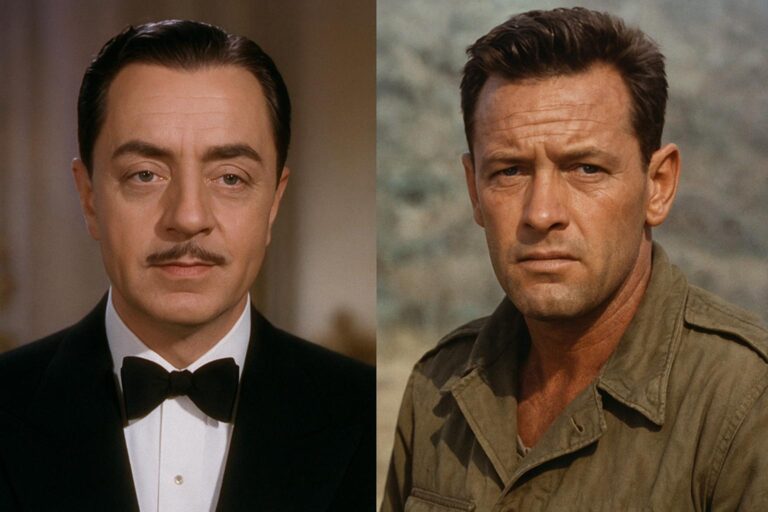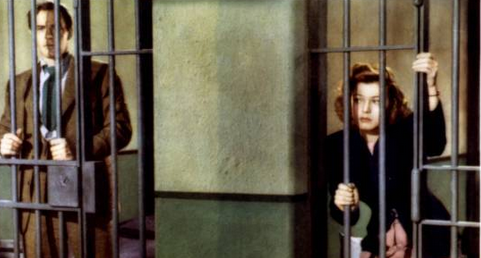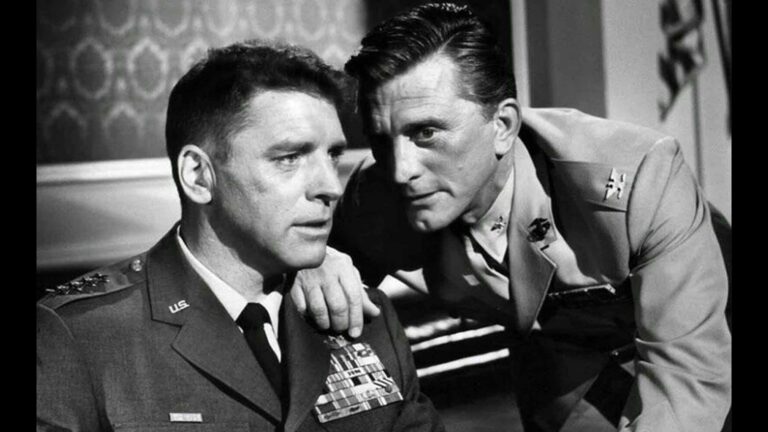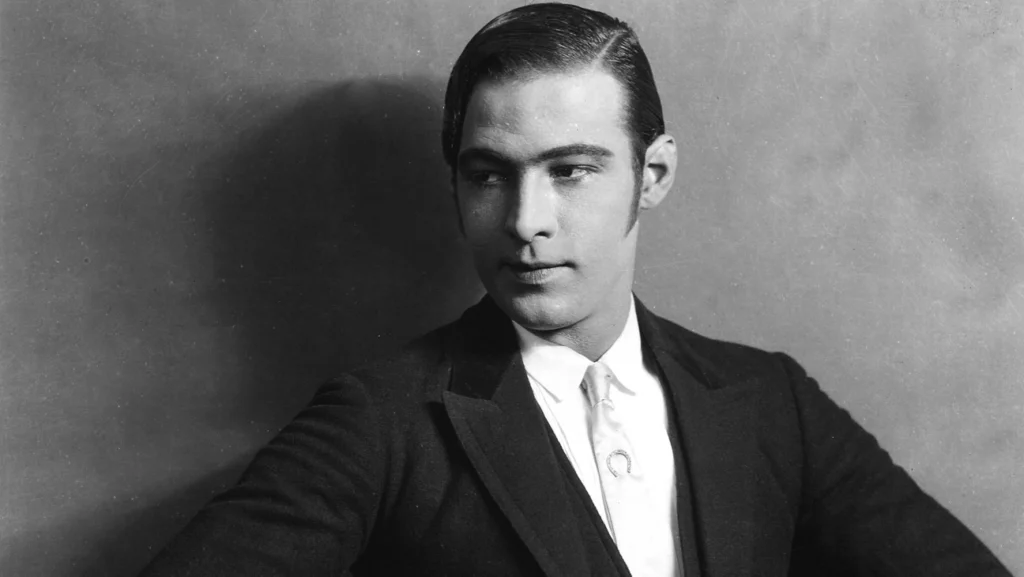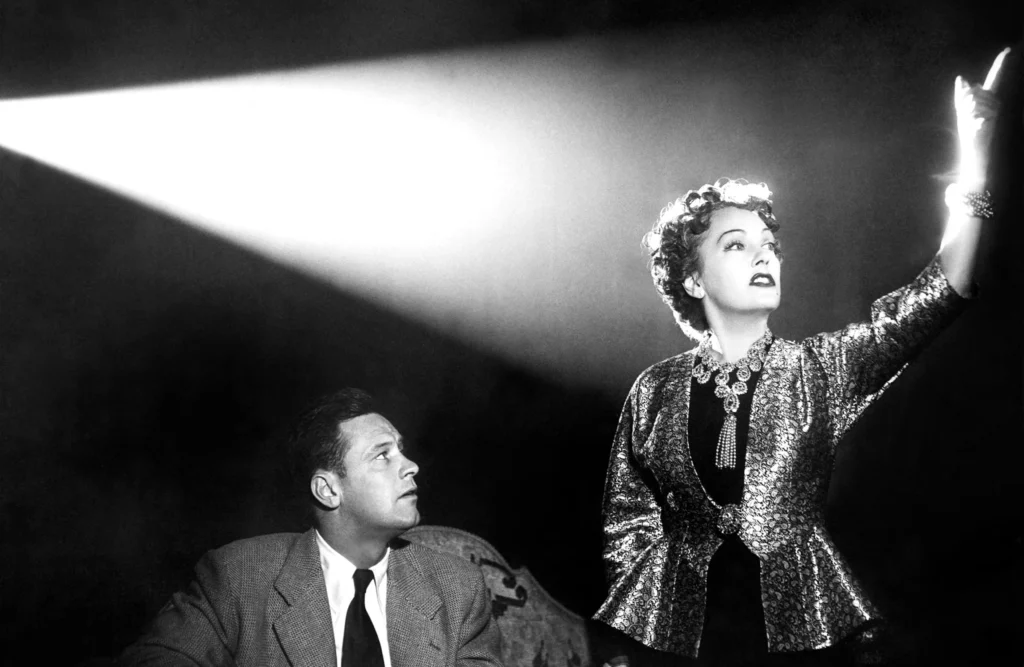At the heart of Scarlet Street is the tragic tale of Christopher Cross, a mild-mannered cashier who dreams of artistic success but falls victim to manipulation at the hands of the coldly seductive Kitty March and her opportunistic boyfriend, Johnny Prince. It’s a film soaked in fatalism, a hallmark of classic noir, and a story that plays on themes of self-delusion, cruelty, and the unrelenting weight of fate.
Edward G. Robinson’s portrayal of Cross is one of his most poignant. Known for his hard-edged gangster roles in Little Caesar and Key Largo, Robinson here delivers a performance laced with vulnerability. Offscreen, Robinson himself had a strong appreciation for the arts, and while Cross’s tragic descent into deception and despair was far from his real-life persona, he understood the character’s longing for something greater. Joan Bennett, as Kitty, was in peak form as a femme fatale—her character isn’t a calculating villain but rather an opportunist, cruel by circumstance rather than premeditation. It’s her casual disregard for Cross’s feelings that makes her so chilling.
The chemistry between Robinson and Bennett was shaped by a deep mutual respect. While their characters were at odds in the film, behind the scenes, Robinson enjoyed working with Bennett and admired her ability to shift between femme fatale roles and lighter comedic performances. Meanwhile, Dan Duryea, playing Johnny Prince, was Hollywood’s go-to for smarmy, sneering villains. Known for his distinctive, often mocking line delivery, Duryea leaned fully into the role, giving Johnny an unpredictable, violent streak that kept both Kitty and Cross on edge.
Off-camera, Lang’s approach to directing his actors was famously rigorous. He was known for his demanding perfectionism, requiring dozens of takes for the simplest interactions. His keen eye for visual storytelling extended beyond cinematography—he would sometimes direct actors by physically guiding them into precise positions, ensuring that every movement aligned with his vision. Bennett later recalled that Lang’s meticulousness was exhausting but ultimately rewarding; he could extract performances that lingered long after the cameras stopped rolling.
While Scarlet Street was received well by critics, its themes of moral ambiguity and implied sexuality led to bans in several cities, including New York and Milwaukee. Yet over time, the film’s stature grew, becoming one of the finest examples of film noir—a testament to its sharp storytelling, haunting performances, and Lang’s unwavering cinematic vision.


